Last updated on April 30, 2024
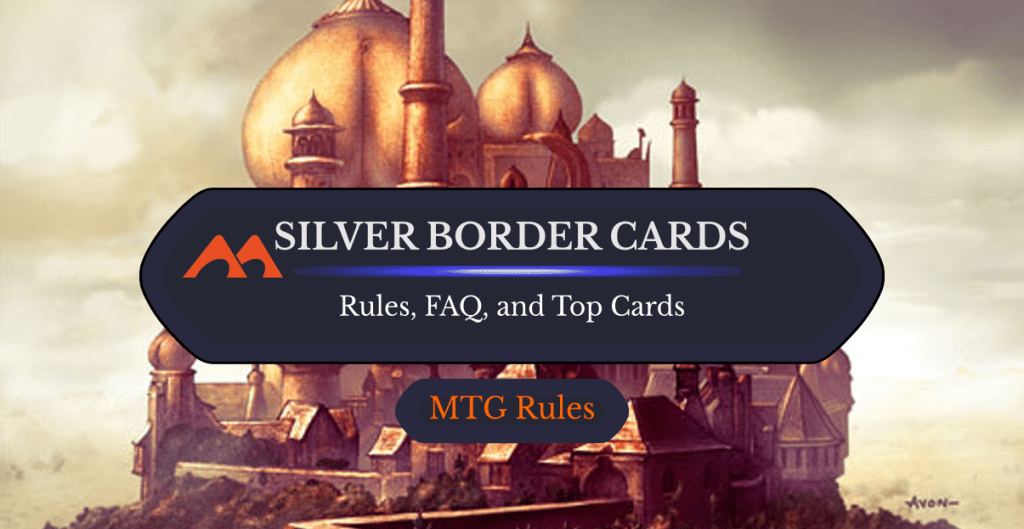
City of Ass | Illustration by John Avon
Cards with silver borders are among the craziest in all of Magic: The Gathering. It’s pretty much their main selling point. Coming from what are known as “Un-sets“, silver-bordered cards are aimed at a casual, kitchen-table environment, and their main goal is to break as many Magic rules as possible, usually for comedic purposes.
Which begs the question: where else, besides your kitchen table, can you play these crazy cards?
Why does the fifth Un-set, Unfinity, have cards with black rather than silver borders and a weird acorn-looking holofoil logo?
Let's check what rules this unsettling crew plays by and see how many silver linings we can find.
What Are Silver Border Cards?

The Cheese Stands Alone | Illustration by Randy Elliott
Silver border cards are from supplemental, tongue-in-cheek MTG expansions, collectively known as the Un-sets, that are only intended for casual play.
The silver border provides a clear indication that these cards are a self-parody and not Constructed-legal. The only way to play them is in a casual format with a friend or group of players that all agree to allow some or all of these silver-bordered cards (in Commander, this is known as Rule Zero).
Some promotional cards also have silver borders, for the same reason.
The History of Silver Border Cards in MTG
From time to time, MTG releases an Un-set: supplemental expansions with over-the-top mechanics not intended for Tournament play.
These Un-sets have crazy mechanics that break the Magic rules, like cards that care about the cards' art or artists, effects triggered by players saying a specific word aloud, cards costing silly amounts of mana or having fractional costs, cards that care about flavor text, etc. To denote these cards' tongue-in-cheek-ness and make it clear that they’re only intended for casual play, cards from most of these sets have a silver border.
The Un-sets using the silver border conventions were Unglued back in 1998, followed by Unhinged in 2004, Unstable in 2017, and Unsanctioned in 2020. There's a fifth un-set, Unfinity, in which the telltale visual was changed from silver borders to an acorn holofoil.
According to Magic's head designer Mark Rosewater, silver borders created quite a bit of confusion among players. “The ultimate problem,” wrote Mark in his personal blog, “was the audience's reaction to the silver border. It most often doesn’t get treated as ‘this is a different subset of Magic', but rather ‘this isn’t a real Magic card'. I have letter upon letter of people who want to play Un-cards in casual play, things in which there aren’t even playing an established format, and their friends don’t let them because they say they aren’t ‘real'.”
Are Silver Border Cards Legal?
Cards with silver borders are intended only for casual play.
Silver-bordered cards are pretty much like custom cards. If your playgroup is okay with them, go wild – but you can't play them in tournaments or more formal settings.
Silver Border vs. Gold Border
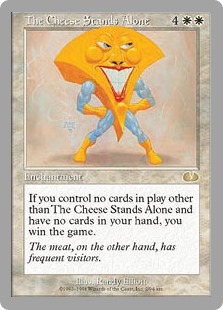

Gold-bordered cards are reprints that were included in a commemorative set, like the World Championships Decks that were released from 1997 to 2004. These were full reprints, sideboard included, of the four best decks of each year's World Championship; the cards from these sets have gold borders, a pilot's signature, and non-standard card backs, making them not legal in Tournaments.
The difference with silver-bordered cards is that gold-bordered cards are reprints of cards that are, or were at the time, legal for Constructed play.
In a way, the legality of gold-bordered cards is quite similar to proxies; in a sense, it's not too much of a stretch to see these as “official proxies”. They’re indeed an official product, released by Wizards of the Coast, and are copies of Constructed-legal cards; but, like proxies, you can't use them in formal settings or tournaments.
Notice that their lack of legality in tournaments makes gold-bordered cards much cheaper than their legal versions. For example, a copy of Gaea's Cradle from Urza's Saga (the legal version) costs north of $800; the version from World Championship Decks 1999 costs about 25% of that. If your playgroup happens to be okay with proxies, cards with gold borders are an interesting way to proxy a real card with an official product.
Silver Border vs. Acorn Symbol
Un-sets' silver borders were confusing to many players as they tended to think that silver-bordered cards were not real cards (rather than being real cards that were intended for casual play, which was Wizards' intention).
For this reason, Wizards of the Coast abandoned the silver border for the fifth Un-set, Unfinity. In this case, all cards have black borders, and an Acorn logo marks which of those cards aren’t tournament-legal.
In other words, in Unfinity the acorn logo indicates the cards' “silver-border-ness” – except for the visual aspect, an acorn logo denotes the exact same thing as a silver border.
Which, as it turned out, wasn’t much of an improvement. “The acorn didn’t go over great,” Mark Rosewater later wrote. “Players would have been happier with a silver border (which wasn’t possible based on when the decision was made to make the viable cards eternal-legal).”
Can You Play Silver Border Cards in Commander?
Formally, no.
Casually, yes, as long as your fellow players are specifically okay with them.
Best Silver Border Cards
Ranking Un-set cards is a bit like explaining a joke. These are intended to be played more for fun and comedy than for power and efficiency. Here are a few that stand out both as interesting to play and as having a bit of punch to them.
The Cheese Stands Alone
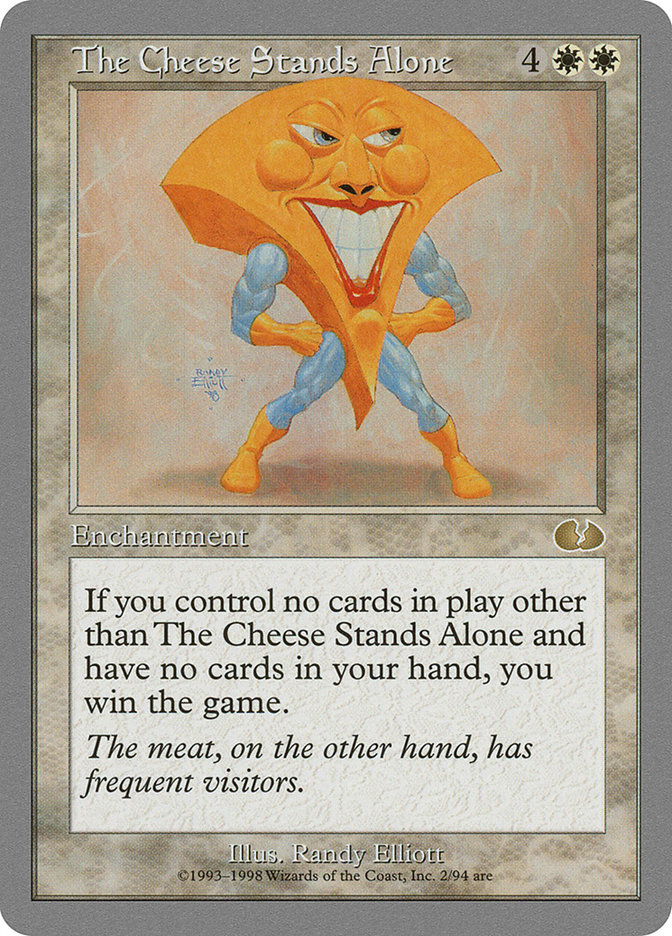
Un-sets contain a handful of alternative win conditions, and The Cheese Stands Alone is among the most “normal” of them (at least “normal” in the sense that nothing on the card itself is against the grain of standard Magic rules).
If your playgroup wants to try some silver-bordered cards that aren’t overly crazy, The Cheese Stands Alone may be a good place to start.
City of Ass

A clear riff on City of Brass, City of Ass is actually a very solid 5-color land: if you have two copies in play or have a way to copy its ability, you can generate 3 mana of any color per turn.
When City of Ass was printed, mana burn was still a thing (unspent mana would deal damage to you), so the extra half mana would harm you and in a way work like City of Brass‘s ping when tapped. The change to the mana burn rule made City of Ass all the better.
Blacker Lotus
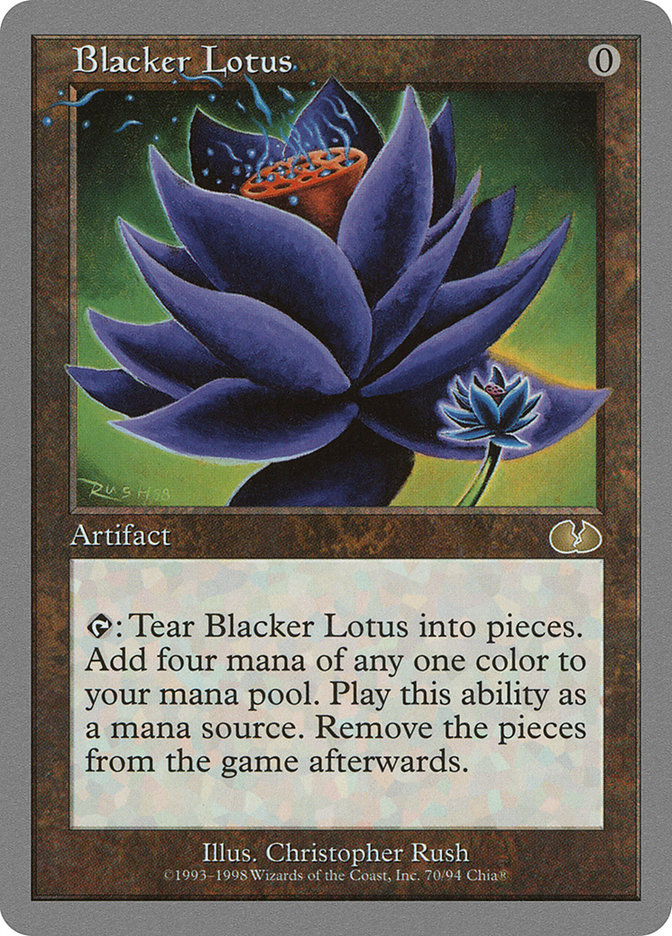
As long as your playgroup doesn't take tongue-in-cheek cards too seriously, this one’s obviously one very strong mana rock.
On the other hand, if your friends do force you to really tear Blacker Lotus into pieces, this may be an expensive one-trick pony. Or maybe you just need better friends.
Ashnod's Coupon
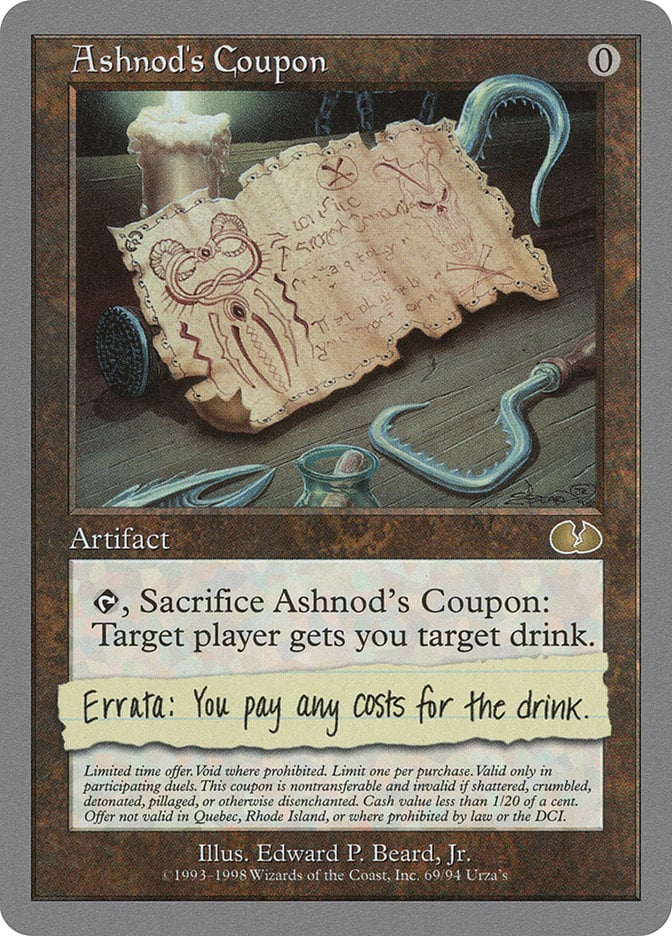
Now, this one is a silver-bordered card that deserves to see a lot more play!
As long as everybody at the table is willing, able, and old enough to legally interact with social lubricants, Ashnod's Coupon can be the life of the party.
Face to Face
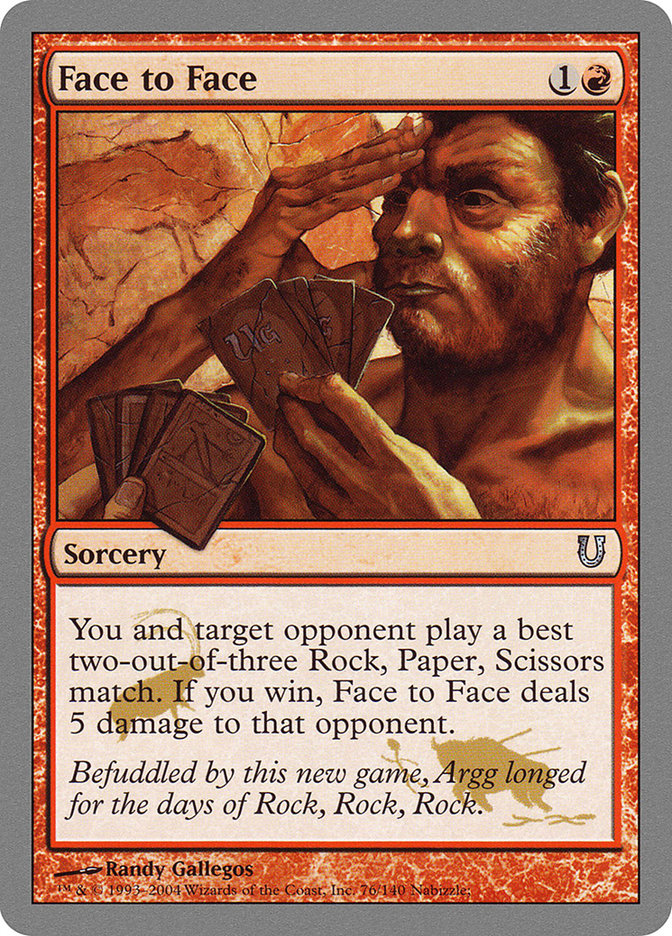
Sometimes we complain that a particular MTG meta is too rock-paper-scissor-ish… Face to Face is here to prove that we’re actually correct!
Unhinged has a few more cards like this that ask two players to play a mini-game; Face to Face is my opinion the most balanced among them, and the mini-game is quick enough to play.
Wrap Up
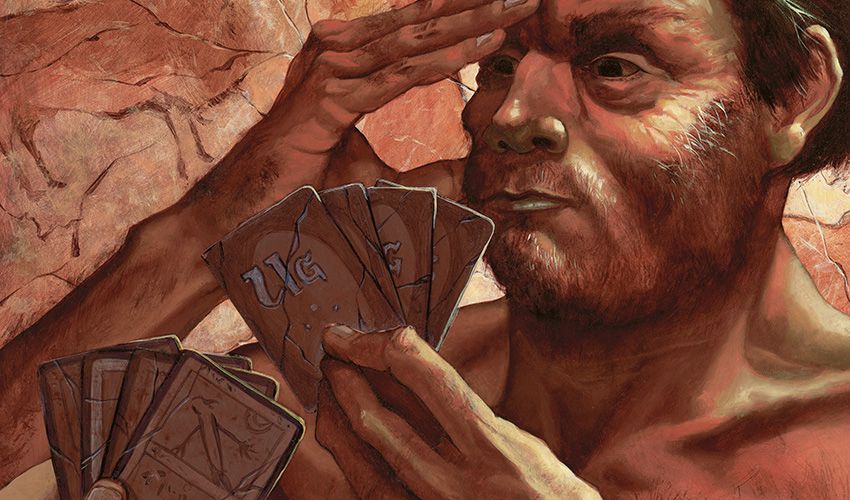
Face to Face | Illustration by Randy Gallegos
And that's the story and legality of cards with silver borders: formally speaking, you can't play them in any sanctioned tournament, but the silver lining is that they can change the pace and contribute quite a few laughs if your playgroup is willing to add a bit of goofiness and tongue-in-cheek cards into the mix.
I hope you've enjoyed this dive into the legality of silver-bordered cards and their acorn cousins; if you have any comment or feedback, please let us know in the comments or stop by the Draftsim Discord and let us know.
And hope this article has sparked an interest on going Mine, Mine, Mine! on some unsettling cards.
Follow Draftsim for awesome articles and set updates:
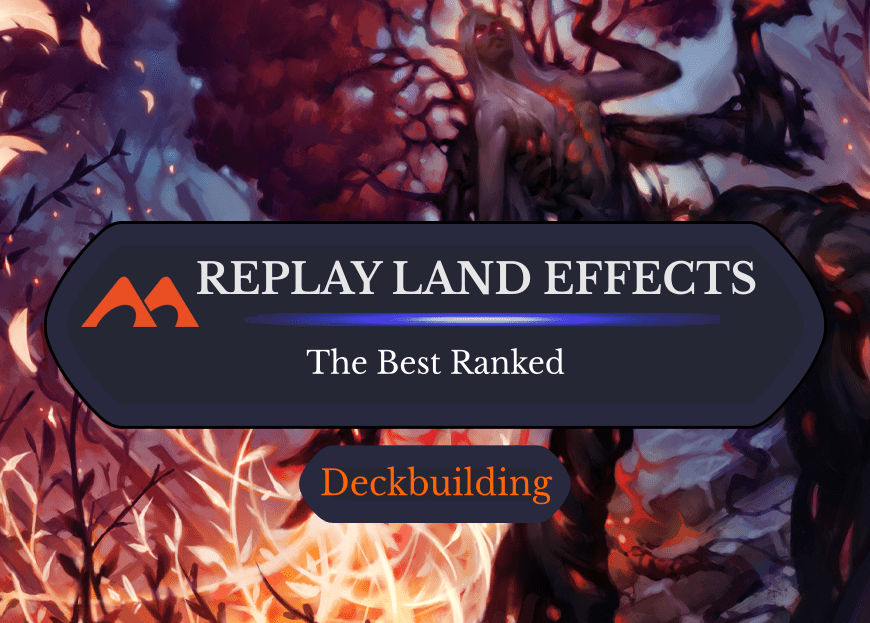
Add Comment